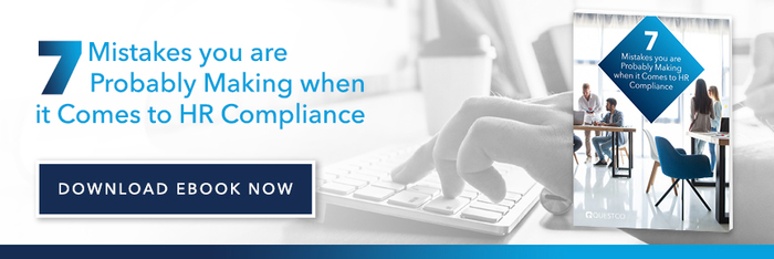
Although the US Federal law prohibits employers from discriminating against current and potential employees based on age, race, and gender, the practice is still prevalent among some employers. The US Equal Employment Opportunity Commission (EEOC) reveals it received 72,675 charges of workplace discrimination in 2019 from across all the US states.
If you are found guilty of Equal Employment Opportunity (EEO) violations, your company may be required to pay the penalty. The penalties of EEO violation range from one type of discrimination to another. In 1997, the EEOC raised the penalty for each EEO violation from $100 to $110. As of July 2016, the penalty was further increased to $525 per EEO violation.
What Is Equal Employment Opportunity?
Equal Employment Opportunity refers to a set of civil rights protections designed to protect employees against workplace discrimination of all forms. The federally mandated regulations bar employers against engaging in any part of an employment process that discriminates due to gender, race, color, marital status, religion, age, country of origin, or disability.
The EEO law originates from Title VII of the Civil Rights Act of 1964, whose primary goal is to protect employees and applicants from discrimination in promotion, hiring, pay, discharge, and fringe benefits due to the factors mentioned above.
What Is an EEO Violation?
Under the laws enforced by EEOC, an EEO violation is any workplace action by an employer that discriminates against an applicant or employee due to a person's race, color, religion, sex, nationality, age, disability, or genetic information. An EEO violation may entail any of the following and much more:
- Preferential job advertisements
- Discriminative recruitments, application,
- Discriminative hiring, employment terms, and conditions
- Discriminative background checks
- Preferential remuneration, pay and benefits, training, apprenticeships programs
- Workplace harassments
- Retaliation of employees because they complained of workplace job discrimination or they assisted with a violation investigation or lawsuit.
If an employee believes they are victims of an unlawful employment discrimination law enforced by the EEOC, they may file a charge with EEOC as the first step to litigation. The charge should be filed within 180 days after the alleged offense.
After receiving the complaint, EEOC notifies the employer within ten days. Once the employer responds, EEOC begins the investigation by collecting relevant information, documentation, interviews with all parties, and reviewing relevant evidence. Upon the completion of the investigation, the EEOC determines whether there are sufficient causes that support the charge.
The EEOC will then issue its conclusion through a determination letter addressed to the employee. The letter contains the summary of the investigation and the reasons supporting EEOC's findings.
What Is the EEOC?
The US Equal Employment Opportunity Commission (EEOC) is an independent body that enforces EEO laws prohibiting workplace discrimination. The body provides leadership and guidance to federal agencies and employers on all aspects of the equal employment opportunity program(EEO). Additionally, the EEOC has the mandate and authority to investigate any discrimination charges against all employers and entities covered by the law.
The EEOC also has a duty to prevent discrimination before they occur through extensive outreach, training, education, and other technical assistance programs. Ideally, most employers with at least 15 employees, employment agencies, and labor unions are covered by the EEOC laws.
How Does Size Affect a Company's EEO Responsibilities?
EEO compliance can mean different things for different organizations and businesses. Your EEO responsibilities will majorly depend on the size of your employees. In a nutshell, having more employees will ultimately increase your regulatory burden:
- 14 or fewer employees- if you are an employer with a maximum of 14 employees, the EEOC compliance requires you to pay all your workforce of all gender entities equally for equal work. In essence, this means that all the other EEOC compliance rules don't apply to you.
- 15 to 19 employees- the EEOC responsibilities expand to cover all the other protected classes except age in all your hiring and employment practices. This means you are covered by the laws that bar discrimination based on race, color, religion, sex, and genetic information. You should also provide equal pay for equal work to all employees regardless of their gender.
- 20 or more employees- the EEOC requirement expands to prohibit age discrimination against persons of at least 40 years old. This means you are protected by the laws that prohibit discrimination based on age, color, race, sex, religion, and genetic information. You should also provide equal pay for equal work to all employees regardless of their gender.
Note: It is important to note that an EEO law that applies to a company applies all the time, regardless of your state. Also, your state could have additional rules depending on your workforce and company size.
Importantly, you should keep in mind that EEO compliance covers the employees’ families too. In essence, being an EEO compliant also means not discriminating against employees based on their partner's or children's race, color, sexual orientation, gender identity, disability, and more.
How Do Companies Maintain EEO Compliance?
In general, sticking to standard fairness policies at the workplace. You may also consider the following:
1. Address Existing Biases
You can start by auditing all your hiring and employment practices for apparent weaknesses that can expose you to EEO non-compliance risks. Work with experts to identify and address any existing or perceived forms of discrimination. For example, if you realize that you are implementing a dress code or time off policy that doesn't reasonably accommodate some employees' religious traditions, make the necessary adjustment.
2. Provide Accessibility Accommodations
Ensure you incorporate the principles of the Americans with Disabilities Act into your EEO laws regardless of whether you have a disabled employee or not. Implementation will help you make your workplace as accessible as possible for employees and job applicants with mobility-related disabilities. Provision accessibility accommodation may include installing ramps and other support for persons with impaired senses, autism spectrum disorders, and several other conditions that qualify as disabilities.
3. File EEO Reports
The EEOC regulations require a company with 100 or more employees and federal contractors with a minimum of 50 employees and $50,000 in contracts to file an EEO-1 form every year. Filing EEO reports is one effective way to show your nondiscrimination practices and protect your brand.
Key Takeaway
Being EEOC compliant in your workplace enables you to gain exceptional ideas and insights from a workforce full of energy, passion, diverse skills, resources, and experiences. When all your employees are happy and well-motivated, your company will gain a solid competitive advantage over your peers.
.jpg)
Jason Randall
Jason L. Randall is the CEO of The Questco Companies. He regularly speaks on topics related to strategy, growth, and organizational performance.




